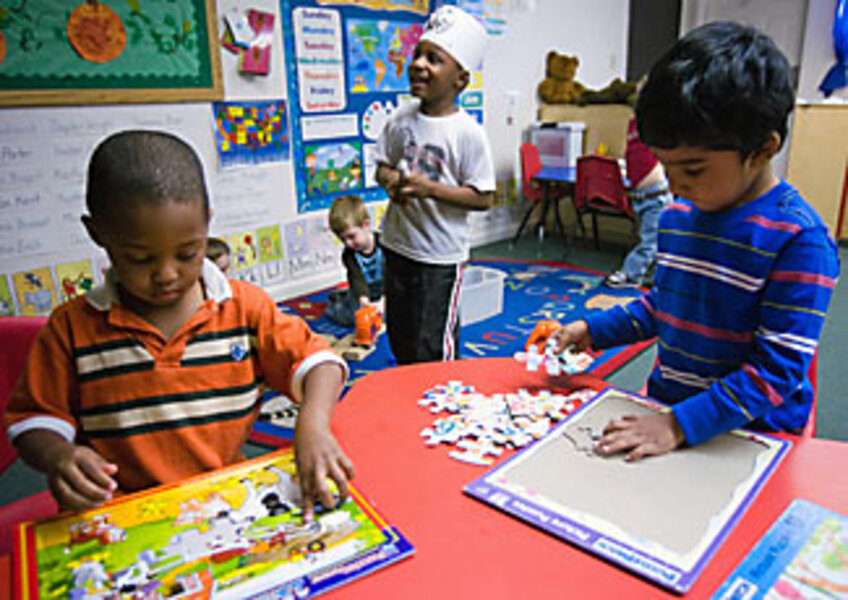In findings on reading, some surprises
If a 3-year-old asks you, "What's that?" when you're holding a rake, tell her more than just its name. Say it gathers up the fallen leaves, that it's made of metal, that it's blue. Tell her it starts with the letter "R" and show her the word. Expounding on a simple lawn tool will be a better springboard for her to eventually start reading and writing.
That's one takeaway from the first comprehensive look at preparing children from birth to age 5 for literacy. In this report, some of the findings reinforce the value of common practices, such as teaching young children the alphabet. But "some of the patterns are different from what people predicted, and that's going to change practice," says Timothy Shanahan, chairman of the National Early Literacy Panel, which released the report Thursday.
One indicator of the need for stronger early literacy is the fact that by fourth grade, one-third of students haven't reached a basic level of reading achievement, according to the 2007 National Assessment of Educational Progress. The picture is even more stark for students from non-English-speaking homes or low socioeconomic status, who tend to start kindergarten behind in preliteracy skills.
Early-childhood education has been expanding in many states, and during the presidential campaign, Barack Obama proposed $10 billion a year in additional investment. The report is well-timed, panelists say, to guide such investments.
Training for preschool teachers in Little Rock, Ark., has already shifted based on an early glimpse that district leaders had of the panel's findings. "When a child gives a one-word answer, the teacher will ... encourage the child to explain further," says Glenda Nugent, director of early childhood education.
Another practice doesn't fare so well against the report's findings. Having kids memorize lists of words is "creeping into a lot of preschools," says Mr. Shanahan, who is also director of the Center for Literacy at the University of Illinois at Chicago. But it turns out that it's much better to also know word meanings and exhibit skills such as listening comprehension.
One strain of educational philosophy posits that such young children should simply play, with no intentional instruction. But that view represents less than 20 percent of early education now, estimates Susan Landry, a panel member and director of the Children's Learning Institute at the University of Texas in Houston. "The biggest challenge now," she says, "is to not go to the other extreme, making it too highly structured."
Little Rock's preschool classrooms aim to reflect the balance that panel members say is best: Children spend a lot of time on fun activities of their choice, but in each learning area there's printed material – books, word labels on objects, an alphabet chart. Teachers help students understand the parts of spoken words, such as syllables, and how they fit together.
The panel found strong evidence that such skills are best learned in "small-group, short, targeted activities," Ms. Landry says. "That could inform policy about teacher-to-child ratio or aides in the classroom."
The National Institute for Literacy funded the panel's work, which examined patterns from about 500 research articles on the skills and teaching approaches that predict later success in reading, writing, and spelling. The institute will share the results on its website and in booklets designed for audiences such as teachers, policymakers, and parents. "People are willing to take the time to do things correctly if they understand why," says Andrea Grimaldi, a senior program officer at the institute.
Parents might be shown, for instance, why talking about a rake can be so educational. "Once [children] have all those pieces of knowing what a rake is and what it can do," Ms. Grimaldi says, "it opens up a whole other world of how it relates to other words and other situations." Sources: National Early Literacy Panel and the National Institute for Literacy





